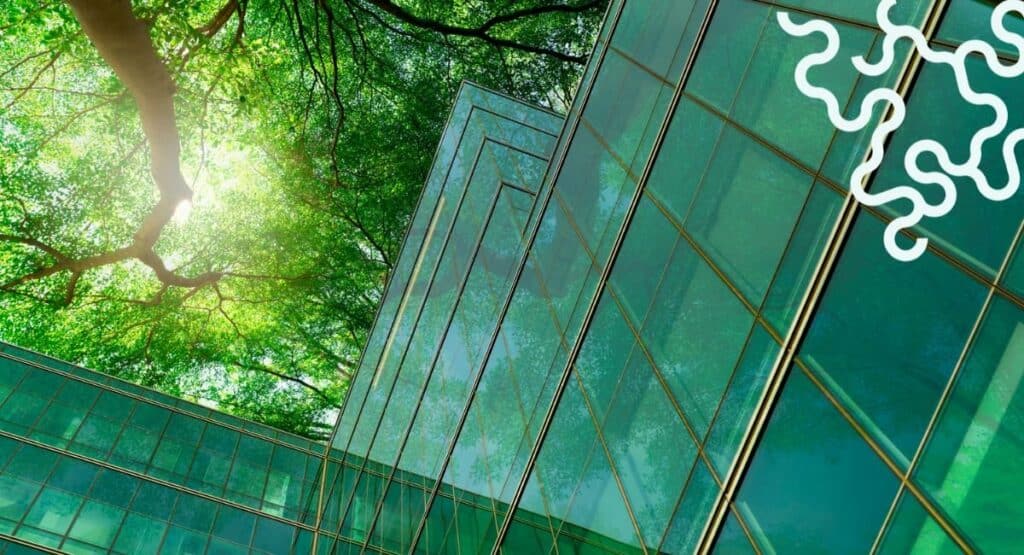
The real estate industry is facing a transformative time with the escalating challenges posed by climate change. From increased risks of damage to rising insurance costs, the need to adapt to the changing climate is urgent
- The real estate industry and private property owners are some of the most vulnerable groups when it comes to the risks and impacts of climate change," said Lina Molin, Ecogain's climate adaptation expert.
An increased frequency of extreme weather events, with rising water levels, landslides and increased temperatures, poses direct risks to existing and future property portfolios. These risks not only lead to physical damage, but can also lower land and property valuations and increase insurance costs. We are already seeing signs of demand for climate risk analysis in new real estate investments, and it will almost certainly become a standard part of environmental due diligence (EDD) in the near future.
In risk areas, there is a risk that Swedish insurance premiums will change in the future to the detriment of those companies and individuals who are repeatedly affected by floods, landslides and mudflows. Swedish Insurance repeatedly states the importance of prevention and making good choices in new construction. If the same type of damage occurs frequently or the facts indicate that the risk of a type of damage is high, it can no longer be considered unforeseen by insurance companies.
In several other European countries, there is a trend towards property owners not being insured against recurring natural disasters, and it is likely that we are heading for a similar development in Sweden too. Of course, this is not something that insurance companies are striving for, but rather to eliminate and prevent the risks and damage that may occur.
Include climate resilience in the planning stage
In new developments, the location of the property and the nature of the land are increasingly important to investigate. In addition to the Planning and Building Act's requirement to investigate the suitability of the land, developers are encouraged to review the entire landscape to reduce the risk of unpredictable events from areas upstream of the area.
In addition to this, there are also social perspectives that can be taken into account in a real estate portfolio. A project at Mid Sweden University's Research Centre for Risk and Crisis examined the short- and long-term consequences of homeowners' risk perceptions, ability to pay and risk behavior for the insurance industry. The study identified that there are differences between how people perceive risks and how they should be managed. It shows, among other things, that differences in financial assets, education level, gender, and where people live affect how they perceive and manage climate-related risks.
To meet these challenges, the real estate industry needs to be proactive. Incorporating climate resilience at the design and planning stage increases the lifespan of buildings, and reduces the risk of incurring additional repair and refurbishment costs. Long-term planning and management contributes to both economic and environmental sustainability and increases the resilience of buildings to climate-related risks.
Three key areas for climate adaptation for buildings
- PROPERTY LOCATION AND SURROUNDINGS
Soil conditions and the landscape around the property play a major role in the ability to reduce the risk of damage and stress. These analyses should include soil stability, vegetation, water catchment areas and other natural values. This should be analyzed both for existing properties and for new developments.
For example, if a property is located at a low point, the risk of flooding and waterlogged land increases. If the property is located on a slope, the risk of landslides and erosion increases. The risk of such an event is closely linked to the nature of the soil and local rainfall. - PROPERTY VALUE
The condition and location of the property is part of its value. The effects of climate change, with heat and more humid and wet environments, can affect both the indoor environment and the external structure of the property. Damages such as rot, mold and pests are expected in a future climate, and maintenance work will become more important.
In addition to this, a property owner needs to review what kind of value is inside the property. If it is a property where people are housed, the indoor environment will obviously be very important. There is also a need to move material items from areas that could be flooded in the event of an accident. - TRANSPORT TO AND FROM PROPERTY
Roads to and from a property are affected by weather events such as high flows, torrential rain and other storms. If there is a transport dependency linked to the property, safe routes in and out need to be created. In many cases, this is difficult to control on your own. Cooperation with several actors is required to ensure that the road quality is approved and that there is an updated contingency plan in case of an accident. Ecogain offers support in climate adaptation. Ecogain works continuously to include multifunctional nature-based solutions. These are solutions that help reduce emissions, strengthen resilience to climate risks and contribute to our emergency preparedness while ensuring that biodiversity is maintained and enhanced. Examples of such measures include replacing unnecessary hard surfaces with vegetation and natural water collection points that contribute to biodiversity. Vegetation and water locally lower the temperature during summer and can reduce the risk of flooding. In addition, there are many social values such as seeing the changing seasons, recreational areas and the opportunity to cool off.





